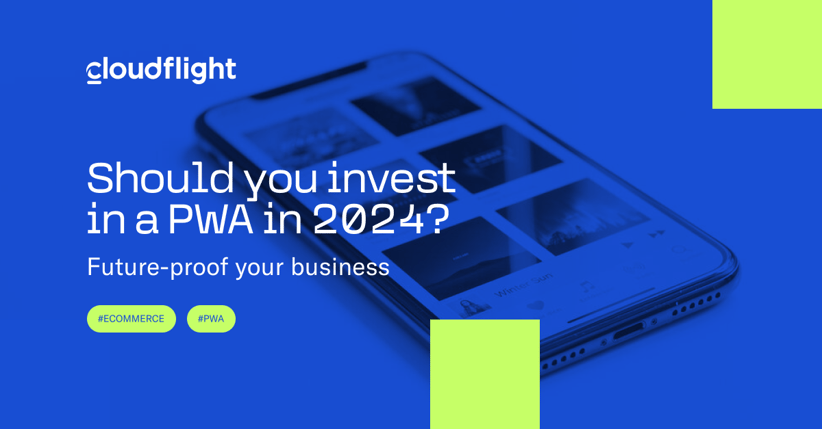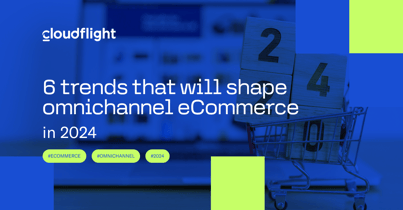A few years ago, progressive web application (PWA) technology was everywhere. All the big brands were building their own implementations, and success stories about both user and business benefits were popping up almost every day. Now, however, the buzz seems to have quieted down and we rarely hear about this technology.
So, what does this mean for you as an eCommerce business owner? Were PWAs just a fad that has passed and you should look elsewhere while developing your digital strategy? These are the questions we’ll take a look at in this article. We’ll analyze how relevant PWA tech is today, what it offers, and whether you should consider it in your plans for 2024.
Is PWA technology still relevant today?
At first glance, it’s reasonable to wonder whether PWA technology will still be relevant in 2024. The biggest boom happened quite a while ago: around late 2017 and early 2018. Now, there isn’t much buzz about it from the usual sources, and success stories of PWA implementations seem to have stopped popping up. However, I believe there’s more to the story, so let’s dig into it.
Here’s the Google Trends’ report on the frequency of “PWA” searches over the past five years. As you can see, it’s been very steady apart from a single big bump in 2020 that was caused by an unrelated event: Thailand’s Provincial Waterworks Authority offering free tap water to households during the peak of the COVID-19 crisis. The small rise at the beginning of 2022, on the other hand, should be taken with a grain of salt because this is when Google's tracking algorithm changed.
Search frequency for “PWA.” Source: Google Trends
You can look at the chart above and come to the conclusion that PWAs are indeed a stagnant market. After all, in the business world, we’re trained to always be looking for growth as the determinant for success. But this is not necessarily the case, which can be illustrated by another chart: this time for “PWA development.”
Search frequency for “PWA development.” Source: Google Trends
Here’s what’s likely happening here; PWA technology has become quite ubiquitous and common knowledge in the world of large business. We already know about its main benefits, so generic “PWA” searches aren’t needed. Instead, growing companies, knowing that the tech is right for them, are going straight for “PWA development” queries. While its chart is admittedly very chaotic, you can still see an upward tendency there.
That’s also likely why most case studies discussing successful PWA implementations are from 2017 and 2018, and we hardly ever see new ones. Publishing a PWA case study today would be the equivalent of writing “water is still wet,” but still, it doesn’t mean that water has become irrelevant. In fact, it’s quite the opposite. PWA technology has recently received some much-needed love from the biggest players in the industry.
Big players expanded their support for PWA in 2023
Traditionally, PWA technology has been championed primarily by Google, although, technically, all the major platforms supported it. In 2023, however, we saw a big push in this direction from both Apple and Microsoft. It’s a clear indication that the technology is going strong and solidifying its position in the market for 2024.
Apple’s PWA commitment
Earlier in the year, Apple signaled its commitment to PWA technology with the release of iOS 16. The update introduced notifications for home screen web apps to take advantage of the web push standard with support for badging. It also added an API for iOS/iPadOS browsers that enables the “Add to Home Screen” feature.
That was just the beginning, though. The notes for the upcoming releases of Safari 17 and MacOS Sonoma suggest an even closer embrace of PWA technology that includes a number of significant features and improvements.
Adding web apps to the MacOS dock
The biggest nod in the direction of PWAs introduced with MacOS Sonoma is the ability to seamlessly add any web app to the main system dock. You can freely open the installed apps in their own windows and allow them access to system features such as “Stage Manager,” “Screen Time,” “Notifications,” and “Focus.” The installed web apps also get their own dedicated storage and, thanks to Web Share API Level 2, they can share files with other apps on the device.
Improved service workers
Service workers are scripts that are crucial for PWAs because they facilitate offline functionalities and data sync, allow the PWAs to send push notifications, and more. Apple’s developers have worked on them extensively for the latest Safari release by improving their performance and reliability, and introducing support for new APIs.
Smarter notifications
Finally, thanks to improvements to the web push API, PWAs can now send silent push notifications. That’s a significant step forward when it comes to automatically updating the web app’s content or state without the need to alert the user.
Microsoft’s step towards PWAs
Microsoft’s move, on the other hand, happened on the level of business rather than technology. This summer, they announced that PWA developers who use PWABuilder will have the opportunity to publish their products on the Microsoft Store for free. Coupled with giving a big overhaul to their PWA development documentation, this is a clear sign that Microsoft’s decision-makers also see a bright future for PWAs.
What can PWAs do in 2024?
As with nearly any technology, the features and capabilities of PWAs have been gradually expanding year by year. PWA tech itself is improving, but also, as we saw in the section above, so is the support by the likes of Google, Apple, and Microsoft. Keeping this in mind, let’s see where PWAs currently stand in terms of features and what they mean to you and your customers.
Camera access
Users can take photos and videos directly from the PWA, which can improve their customer experience in a big way. You can, for instance, implement a QR and barcode scanning feature and streamline customer support through intuitive documentation of the issue.
AR and VR projection
Access to the camera also lets you introduce an augmented or virtual reality (AR and VR) module that will allow users to virtually place 3D models of your products in their surroundings. You can, for instance, allow your customers to see how furniture would fit into their room or virtually try on clothes. This can be especially important in the coming years when you consider the fact that the release of Apple Vision Pro is likely to reignite interest in all things AR and VR and bring them into the mainstream.
Geolocation
With the gap between eCommerce and brick-and-mortar retail becoming blurry in recent years, geolocation is another PWA feature that can bring huge quality-of-life improvements for your users. This lets you implement location-aware features, like store locators and real-time tracking, which come in handy, for example, when customers opt for in-store pickup instead of delivery. You can also use the feature to deliver personalized content and other marketing collateral that’s adjusted to the user’s location.
Push notifications
The ability to send push notifications remains one of the main selling points of PWAs. They can keep users informed and engaged with real-time updates, such as promotion alerts, order status changes, and personalized recommendations. In a landscape where your customers are bombarded with easily overlooked emails, push notifications can be a more direct and effective way of keeping in touch.
Bluetooth connectivity
On the less obvious, maybe even a little underappreciated, side of the spectrum is PWAs’ ability to use Bluetooth. This opens up the possibility for many creative uses in the context of eCommerce. For instance, if you’re running a sports supplements store, you might want to connect to users’ fitness trackers and leverage its data to suggest optimal products.
Speech recognition
PWAs can get full access to speech recognition functionalities of devices that they’re installed on. This can be a simple matter of convenience for some users but a key selling point for others. Because certain disabilities make standard forms of interacting with apps difficult or impossible, voice interaction is a big step toward accessibility and inclusivity.
Speech recognition is also a matter of future-proofing your business. Natural language processing is currently picking up steam in a big way. As time goes by, you can be sure that there will be more and more practical uses for it in eCommerce that you’ll be ready for.
PWAs and eCommerce trends for 2024
Technology doesn’t exist in a vacuum. Even the most polished and sophisticated tech won’t survive on the market if it doesn’t fit into the current zeitgeist. PWAs, however, seem to be in luck. Most of the eCommerce trends that we’re currently observing synergize with PWAs seamlessly and provide space for the technology to shine. Let’s take a look at a few examples of those synergies.
Composable commerce
The concept of composable commerce emphasizes flexibility in assembling and integrating services and components. PWAs, being highly adaptable and modular, can seamlessly integrate with various composable commerce services and APIs. When you leverage this synergy, you can build custom experiences by integrating various commerce components, such as shopping carts, payment gateways, product catalogs, and inventory management, directly into a PWA. This results in tailored and agile eCommerce solutions with lean back ends and front ends.
Omnichannel commerce
The core of omnichannel commerce is to provide a consistent shopping experience across multiple channels, including web, mobile, in-store, and social media. PWAs are inherently cross-platform and responsive, which makes them ideal for delivering a unified shopping experience. They can serve as the central touchpoint for an omnichannel strategy. Thanks to their offline capabilities, PWAs can ensure that customers receive a seamless experience whether they choose to shop online, visit a physical store, or engage via social media.
Marketplaces
Marketplaces by definition mean huge platforms with a multitude of features and options. In a standard web form, this can make them problematic to adjust for mobile devices and the limitations they pose. PWAs are the perfect answer to this dilemma. They can enable marketplace operators to create lightweight mobile-friendly, app-like experiences for mobile users. They can easily accommodate key features such as secure transactions, product reviews, seller ratings, and search functionalities that are all accessible through a unified PWA interface.
PWAs are under the hood of modern eCommerce front ends
While the buzz around PWAs may have quieted down in recent years, the technology remains highly relevant and promising for eCommerce businesses in 2024 and beyond. As we've explored, PWAs are still evolving and continue to receive support from the biggest players on the market.
They offer an array of modern features and capabilities that enhance the user experience and seamlessly address current eCommerce trends. Whether you're looking to streamline customer support, provide immersive shopping experiences, or engage users with real-time updates, PWAs come with the tools to achieve these goals. The synergy with cutting-edge eCommerce solutions, such as SAP composable storefront, proves that PWAs can adapt and excel in the ever-evolving digital commerce landscape. They serve as a seamless bridge between your business and customers, and offer cross-platform, responsive, and personalized experiences.
In a tech-savvy world where user engagement and accessibility are paramount, PWAs are a forward-thinking investment that can future-proof your eCommerce business. So, as you plan your digital strategy for 2024, don't overlook the enduring relevance and potential of PWAs. Make sure to get in touch and let’s explore their potential in your business.
Published September 19, 2023











